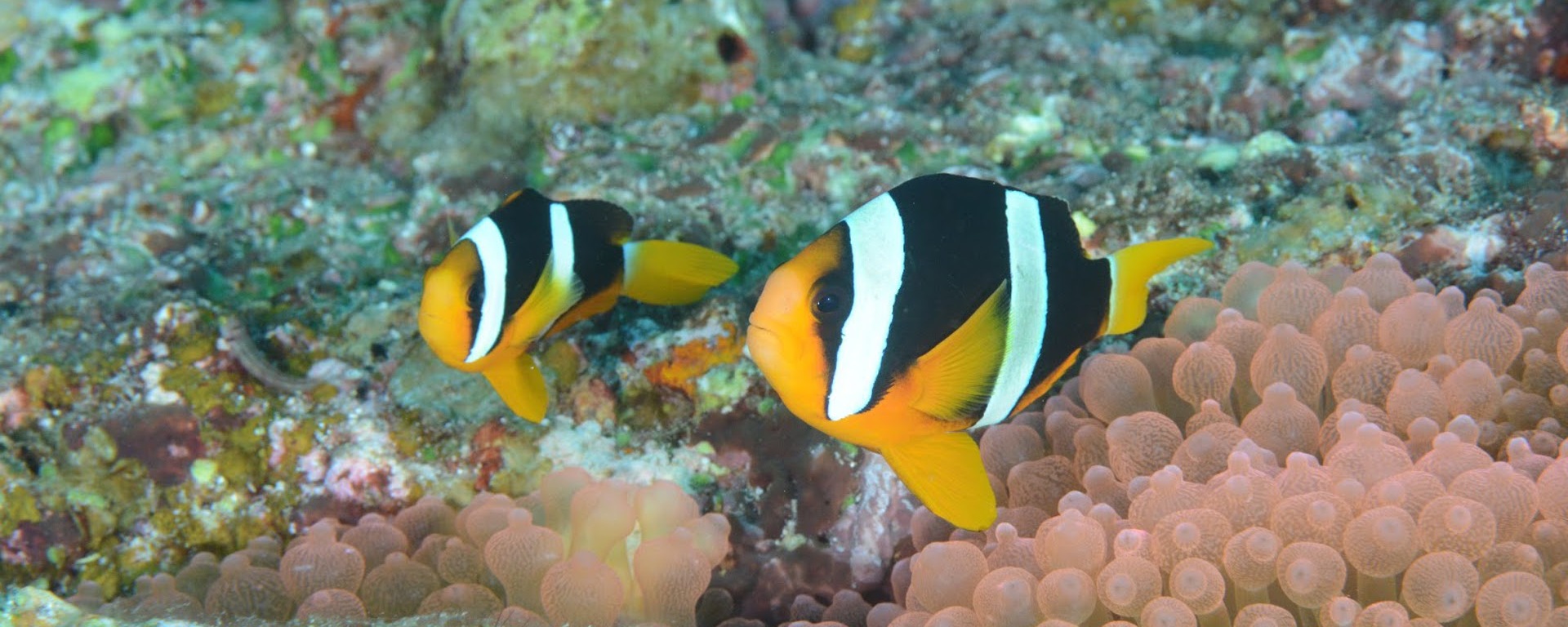Common Name: Andaman Clark’s Anemonefish
Scientific Name: Amphiprion cf clarkii
Distribution: Eastern Indian Ocean, Bali, Java Sea
Type Locality: n/a
Identification: Caudal fin bright yellow in both sexes, partially obscuring the posterior stripe. Dorsal fin black throughout; ventral fins yellow. Base coloration of body shows through only near pectoral fin base and head. Melanistic form entirely black; the anal fin darkens first.
Similar: The Indian Ocean populations of the clarkii group are all roughly similar in appearance, save for the one at Chagos. Those from Oman tend to have thinner stripes that often fail to connect above the head, but, in other respects, they appear identical to the true Amphiprion clarkii found at Sri Lanka and the Maldives. Those from the Andaman and Java Sea are also nearly identical, but often have noticeably thicker stripes and tend to have less of the posterior stripe hidden by the yellow coloration of the tail. None of these traits seems to be reliably diagnostic in any sense of the word, and the best way to reliably identify a specimen is to know where it originates from.
Highly amelanistic specimens can appear quite like the Indoensian Clark’s Anemonefish, but the caudal fin has a more saturated yellow hue in both sexes. However, intermediate specimens seen in areas like Bali are difficult to put an identification to and likely indicates extensive interbreeding.
Notes: Specimens form the Java Sea suggest that this fish regularly occurs east of Java and Sumatra, possibly to the reefs of peninsular Malaysia. Aquarium exports of this fish from Sumatra are likely.






























